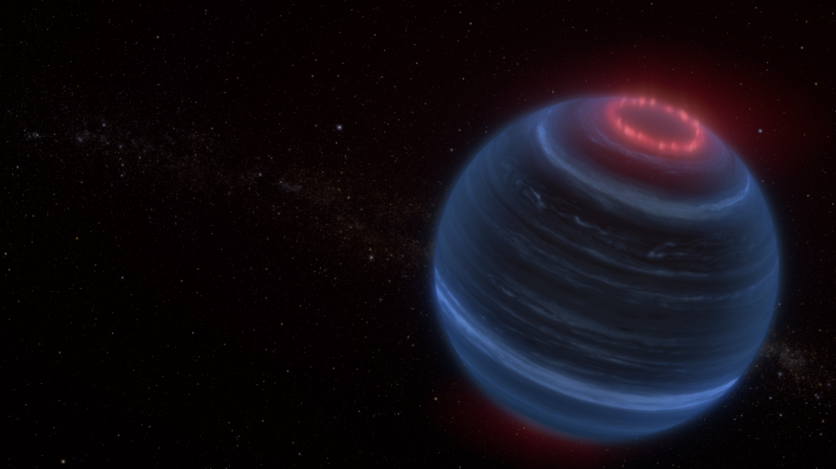NASA's James Webb Space Telescope has made a surprising observation, detecting aurorae on a cold, lonely brown dwarf known as W1935.
The "failed star" or brown dwarf, larger than Jupiter but smaller than a star, lacks a host star and unexpectedly emits infrared radiation from methane in its upper atmosphere. This discovery challenges scientists as there is no apparent external heat source.

12 Cold Brown Dwarfs
A team of astronomers led by Jackie Faherty from the American Museum of Natural History used the James Webb Space Telescope to investigate 12 cold brown dwarfs, focusing on W1935 and W2220.
Citizen scientist Dan Caselden discovered W1935 through the Backyard Worlds zooniverse project. Both brown dwarfs appeared to be similar in composition but differed in their methane emissions.
While W2220 showed an expected absorption feature in its methane spectrum, W1935 exhibited glowing methane emission. Faherty expressed surprise, saying, "We expected to see methane because methane is all over these brown dwarfs. But instead of absorbing light, we saw just the opposite: The methane was glowing. My first thought was, what the heck? Why is methane emission coming out of this object?"
Computer models were employed to understand this phenomenon, revealing that W1935 exhibited a temperature inversion, getting warmer with increasing altitude, unlike the expected cooling.
This temperature inversion, typically observed in planets with nearby stars, puzzled researchers when seen in an object with no obvious external heat source.
NASA Unraveling the Mystery
Astronomers turned to our solar system to unravel this mystery, studying planets like Jupiter and Saturn. These gas giants with temperature inversions are often influenced by aurorae.
In our solar system, aurorae are produced when energetic particles from the Sun interact with a planet's magnetic field, creating captivating light displays. W1935, lacking a companion star, doesn't have a stellar wind to contribute to auroral processes.
NASA noted that astronomers have previously identified radio emissions from numerous relatively warmer brown dwarfs and attributed these phenomena to aurorae.
Despite efforts with ground-based telescopes such as the Keck Observatory to detect infrared signals from these radio-emitting brown dwarfs for a more comprehensive understanding, the results have been inconclusive.
According to NASA, W1935 represents a groundbreaking case as the first auroral candidate beyond our solar system showcasing methane emission signatures.
Additionally, it is the coldest auroral candidate discovered outside our solar system, boasting an effective temperature of approximately 400 degrees Fahrenheit (200 degrees Celsius), about 600 degrees Fahrenheit warmer than Jupiter.
"With W1935, we now have a spectacular extension of a solar system phenomenon without any stellar irradiation to help in the explanation." Faherty said in a statement. "With Webb, we can really 'open the hood' on the chemistry and unpack how similar or different the auroral process may be beyond our solar system."
Related Article : NASA's Hubble Space Telescope Captures 'Butterfly Nebula' In Stunning Motion | Fun Facts About This Beautiful Space Butterfly

ⓒ 2025 TECHTIMES.com All rights reserved. Do not reproduce without permission.




